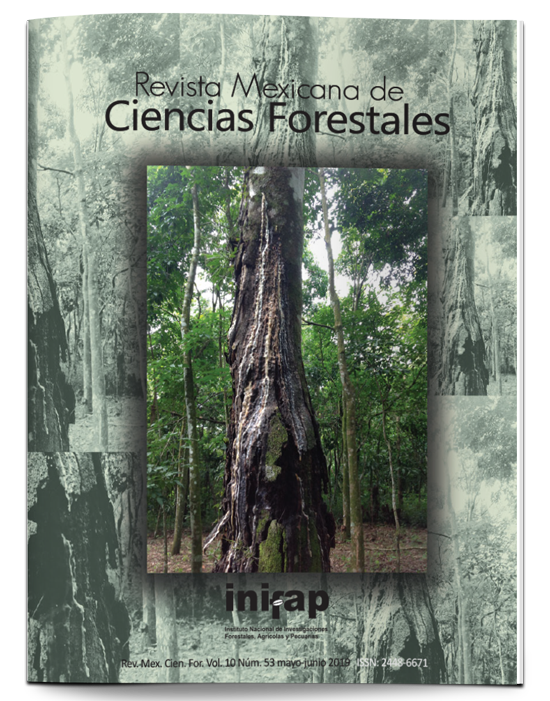A generalized nonlinear height–diameter model with mixed-effects for seven Pinus species in Durango, Mexico
DOI:
https://doi.org/10.29298/rmcf.v10i53.500Keywords:
Mixed-species forests, calibration process, generalized equation, non-linear mixed models, Pinus sp., height-diameter relationshipAbstract
Durango is the major state for timber production in Mexico (28.5 % of the national total); it is estimated that the area under use is 2 million hectares, which is why forest management is an important task for forestry managers. The height-diameter relationship (h-d) is mainly used to describe the structure of a stand, to estimate the individual-tree total volume or stand level volume and to assess the site quality. In this study, a generalized equation was developed for the h-d relationship of seven conifer species in mixed-species forests in northwestern Durango, Mexico. The equation considers diameter at breast height, dominant height, stand basal area and density as independent variables. The nonlinear mixed effect model procedure was used to fit data coming from 44 permanent sample stem-mapped plots. The generalized model explained 82 % of the total variability. Model calibration involved measuring the tree total height in a sample of three trees of average diameter class for each plot. The equation developed could be used as a biometric tool for forest management in mixed forests of the study area.
Downloads
Published
How to Cite
Issue
Section
License
The authors who publish in Revista Mexicana de Ciencias Forestales accept the following conditions:
In accordance with copyright laws, Revista Mexicana de Ciencias Forestales recognizes and respects the authors’ moral right and ownership of property rights which will be transferred to the journal for dissemination in open access.
All the texts published by Revista Mexicana de Ciencias Forestales –with no exception– are distributed under a Creative Commons License Attribution-NonCommercial 4.0 International (CC BY-NC 4.0), which allows third parties to use the publication as long as the work’s authorship and its first publication in this journal are mentioned
The author(s) can enter into independent and additional contractual agreements for the nonexclusive distribution of the version of the article published in Revista Mexicana de Ciencias Forestales (for example, include it into an institutional repository or publish it in a book) as long as it is clearly and explicitly indicated that the work was published for the first time in Revista Mexicana de Ciencias Forestales.
For all the above, the authors shall send the form of Letter-transfer of Property Rights for the first publication duly filled in and signed by the author(s). This form must be sent as a PDF file to: ciencia.forestal2@inifap.gob.mx
This work is licensed under a Creative Commons Attribution-Noncommercial 4.0 International license.






